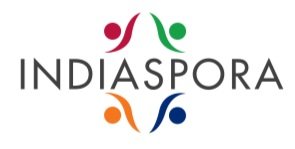The Upanishads Will Bring Quantum Science and Healing to Healthcare
Tat tvam asi. That thou art.
Few would recognize quantum science and the future of medicine in this ancient phrase thundered forth by the Chandogya Upanishad almost 1,500 years ago, but they’re there for those who look closely.
Tat tvam asi indicates the equivalence of Tat, the ultimate reality, and Tvam, you and I as individuals. How could this be? How can an individual be the same thing as ultimate reality? The key to understanding this is unlocking the secret of the quantum.
A quantum is a package or unit of something, defined by a boundary. For example, a quart is a quantum of water, and a pound is a quantum of weight. A rectangle drawn on a canvas is also a quantum—a subset of the entire canvas. Over 100 years ago, Max Planck adopted the word quantum and applied it to physics because he found that thinking of energy as occurring in small packets (quanta) helped him solve an important problem. Thus, “quantum physics” was born.
Quantum physics went on to teach us that these small packets of energy are the fundamental building blocks of matter. Unexpectedly, physicists also found that these elementary particles that constitute atoms, molecules, and the rest of the physical world are, in fact, vibrations in infinite fields of energy.
In other words, the field is the particle, seen differently. Tat is tvam.
Let's say that in your last dream, you had a few drinks and asked your friend what the world was made of. Your dream-friend, being a person of science, said that the world, including the dream-tennis ball in your dream-hand, is made up of small bits of matter—elementary particles. Having done your research, you responded that we now know even the smallest bits of matter are aspects of infinite fields of energy. But how could the small be the same as the big? In the dream, you and your friend tried to reconcile this but ultimately gave up.
Then, you woke up from your dream. In your waking state, you went back and analyzed the dream conversation, realizing that, in fact, the smallest bits that made up that dream-tennis ball were of course nothing other than the infinite field of energy that was the dreaming mind. The dreaming mind was the particle, the tennis ball, and, shockingly, was you! The field and the particle were one and the same, seen from different states of consciousness. Tat tvam asi. That thou art.
Could this be what quantum physics is trying to tell us? That the world is non-material? That the physical body and the mind are made of the same stuff—or non-stuff—at different levels of consciousness? If so, why don't physicists agree on this?
Well, the word quantum existed for centuries before it was adopted by physics. This means the concept of the quantum and the experience of the boundary state were known to the human mind well before they were partially and mathematically described in physics. Therefore, although quantum physics is one of the most successful and popular branches of science today, its full significance is yet to be fleshed out because the roots of the quantum have been forgotten and scientific culture remains cemented in the unexamined foundation of materialist philosophy. Max Planck knew this, but others didn’t catch on, or perhaps couldn’t afford to.
“As a man who has devoted his whole life to the most clear-headed science, the study of matter, I can tell you, as a result of my research about atoms, that there is no such thing as matter.”
–Max Planck, a 1918 Nobel Prize-winning physicist
If mind and matter are essentially of the same nature, then what are the implications for healing? Most of my patients in the ER are not aware of people I’ve interviewed who are healing from all kinds of apparently incurable conditions, often by addressing the underlying emotions and thoughts of their disease. The so-called “mind-body connection” is everywhere you look. Get excited, and your pupils will dilate. Desire to eat a particular food, and your hands will coordinate the actions needed to make it happen. It's so simple that we miss it. Mind and body are one continuous flow until we unwittingly quantize them into separate cognitive and perceptual packets.
Similarly, you and the ultimate reality of this cosmos are one and the same until separated by our limited concepts and perceptions. By realizing this, you can experience the power and vastness of the Upanishads in your daily life, and our medical system can update its science and philosophy with rigor to bring healing to our society.
About the Author
About the Author
Anoop Kumar, MD, MM is a board-certified emergency physician and Co-founder and CEO of Health Revolution, a company building a complete ecosystem for healing. In medical school, he had a near-death-like experience that changed how he saw himself and the world, which led him to start communicating at the intersection of consciousness and health. His flagship 28-Day Jumpstart course guides participants to activate their Four Engines of health and healing: Nutrition, Movement, Connection, and Rest.



